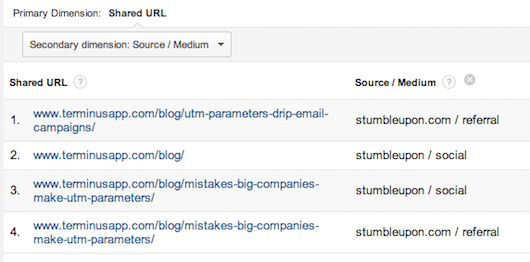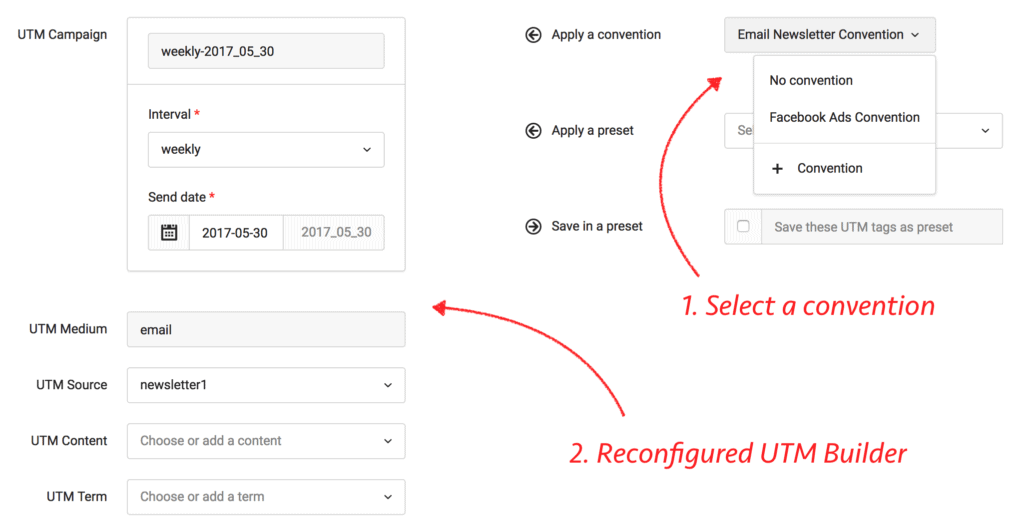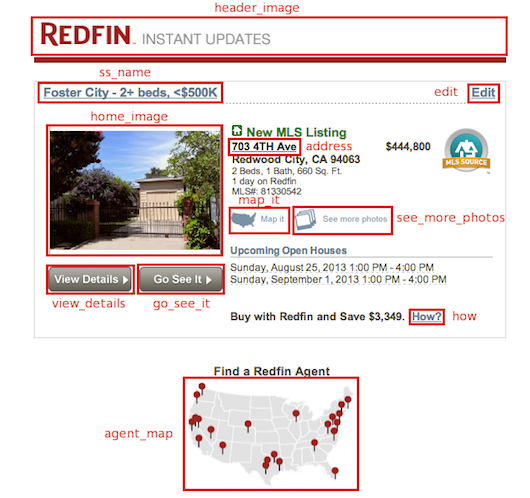Let me guess.
1. You are just starting out with UTM parameters. You want to learn about them and avoid common mistakes in UTM tagging, or
2. You have been using UTM parameters for a while, but they have become messy. You want to cleanup your analytic reports and have a well-defined UTM tagging strategy.
In that case, this course is for you. I promise you are going to get something out of it.
Here’s what we will cover:
- Chapter 1: Know the Two Pillars of Tracking
- Chapter 2: Find the Best UTM Tagging Opportunities
- Chapter 3: What UTM Parameters to use in Social Campaigns?
- Chapter 4: What UTM Parameters to use in Email Campaigns?
- Chapter 5: Manage your UTM Parameters to Keep Your Sanity
Important things to remember when going through this course:
- This will cover some of the basics, but please don’t skip them. These basics will help you understand the core concepts and how Google Analytics sees all the UTM and referral data.
- This course does not have many pretty pictures. Don’t let that stop you from actually reading the chapters.
Let’s get started.
Chapter 1: Know the Two Pillars of Tracking
I’m going to assume you are familiar with Google Analytics. You either have it installed on your own website, or manage it for other people, say, your clients.
Here’s a question for you:
What is the most important piece of information in your Google Analytics reports?
(Hint: It’s also the most common)
It’s where your website visitors come from.
It could be in the form of a referrer, source/medium, campaign name or a combination of these. It’s how a visitor got to your site. Without it, most of your reports are meaningless.
For example, your conversion report, along with the source of your traffic tells you where your most valuable customers are coming from. You can then focus your marketing efforts on driving traffic from high converting sources.
If all the visits were direct, where would you focus your marketing efforts?
So even a conversion report, which is mostly onsite, is not very useful if you cannot tie it back to the traffic source.
Therefore, you must help Google Analytics get this information. And we will soon see how you can do that.
Two Pillars of Tracking
To make sure that the source of your traffic is captured correctly, you need to know where Google Analytics gets these values from. It’s mainly two places:
1. Referrer
Whenever a visitor comes to your website, their browser sets Referrer URL which tells GA (Google Analytics) what page they came from. GA saves this information for every visit. You can see all such referring sites in All Referrals report.
But Referrer is not always set due to several reasons:
- A visitor coming from a bookmarked URL
- Manually typing URL in the browser
- HTTPS to HTTP links
- Mobile apps
- Email clients
- Instant messengers
- Twitter clients
- Links in documents like PDF, MS Word, Powerpoint, etc.
- and many other reasons
In each of these cases, Google Analytics has no information about how the visitor found your website. You can see such visits on the Direct channel.
So how can you make sure that the source of traffic is reliably captured by Google Analytics? That’s where UTM parameters come into the picture.
2. UTM Parameters
UTM parameters are a set of five parameters that you can append to a URL. These parameters contain information about your marketing campaigns.
- utm_campaign: The name of the marketing effort, e.g. launch, 50percent_sale, etc.
- utm_source: Identify the source of the traffic. It could be a website, advertiser, etc. e.g. twitter, facebook, google
- utm_medium: Identify the medium used by a visitor to come to your site, e.g. email, social, cpc.
- utm_content: Identify content or call to action, e.g. buy now, learn more, etc.
- utm_term: Used for paid search keywords.
If your destination URL is http://www.example.com, then the final URL with UTM parameters might look like:
You don’t have to build such URLs manually. We’ll later see how you can use certain tools that help you not only build such URLs, but also manage your UTM parameters.
So should you use UTM parameters all the time? Of course not. We’ll cover the exact cases in the next chapter.
Chapter 2: Find the Best UTM Tagging Opportunities
Let’s start by asking a simple question.
Why should you use UTM parameters?
There are two major reasons:
- Referrer is not always reliable (as we saw in the first email lesson)
- You want detailed information about a marketing campaign than a Referrer can provide, e.g. campaign name, medium, source, etc. and compare these values.
The above two reasons will help us guide when we should use UTM parameters.
When You Should NOT Use UTM Parameters
You should not add UTM parameters to all your links. In some cases, it’s better to leave them alone.
1. Internal Links
You should never use UTM parameters for internal links on your website. Let me tell you an example of why it’s such a bad idea. Let’s say you published a new blog post,
An Awesome Way to do Something Awesome.
You shared it on Twitter. One of your followers clicks on the link and arrives at
www.example.com/blog/awesome-post.
When they are done reading, they want to go to your home page. They click on a link that takes them to
http://www.example.com/?utm_source=blog.
You just lost the information that the user came from Twitter. Your analytics report will say that the visitor to your home page came from blog and not from Twitter.
If you want to know what visitors are doing on your website, use the capabilities of your analytics tool. It most likely has event tracking that lets you capture this information.
2. Organic (unpaid) Search
Google Analytics (and other analytics tools) capture some useful information when a visitor comes to your website from organic search. It could tell you what keywords were used to find your website (even though Google itself does not send the keywords anymore). UTM parameters override this information. So it’s better not to try to tag your SEO campaigns.
But to be honest, there’s not much you need to do here. Google automatically ignores any UTM tracking information when crawling the web. Other search engines, like Bing, also do the same.
3. Natural Referrers
As your brand awareness increases, there will be several websites writing about you. They might link to your website as part of a blog post. It’s fine to let these links not have UTM tracking. The Referrer information is actually quite useful in this case. It contains the URL of the page that brought you the traffic. Such visits will be part of the referral medium. It’s a measure of the overall awareness of your website.
Major caveat: For the Referrer information to remain intact during such visits, make sure your website has SSL, i.e. has https URLs. If the website linking to you is on https and yours is not, then the browsers will remove any Referrer information. Sorry, this is just how all major browsers work due to security reasons. This will help you reduce a lot of direct visits.
Let’s look at the types of campaigns where you should use UTM parameters for tracking.
1. Email Campaigns
Most people read their email using an email client (mobile or desktop). Any link they click on these clients will not have Referrer information set. It, therefore, makes sense to use UTM parameters in your email campaigns. Also, UTM parameters allow you to measure them in much greater detail.
Don’t worry, we will learn what exact UTM parameters you should use for email campaigns in the later chapters.
2. Social Campaigns
There are thousands of social sharing apps out there, which means needing UTM parameters in social media marketing. A link likely clicked in one of these apps will not have Referrer set. Adding UTM parameters to your URLs will help you in various ways such as tracking clicks and traffic for your ads on Facebook or your online store.
3. Paid Campaigns
You should always track your paid campaigns with UTM parameters. You should do this even if your ad vendor provides you a dashboard. There are at least two reasons for this:
- You cannot see the conversions on their dashboard. Even if they have a way, you will have to integrate their code on your website to see the conversion data.
- By using UTM Parameters in Google Analytics, you will be able to effectively identify the performance of your paid campaigns. You can then compare it with other paid campaigns, and even with other types like email and social campaigns.
The only exception to this is Google Adwords, which allows you to link your account to Google Analytics. The performance data is automatically transferred from your Adwords account to your Analytics account.
4. Affiliate Campaigns
If you have other people promoting your product/service, giving them well-defined UTM tracked URLs is important. You can even shorten them using a shortener service to avoid any issues in sharing these URLs.
5. Offline Campaigns
Any URLs you share in brochures, direct mail, etc. should also have UTM tracking information. These should be shortened since the space is limited in print media. Additionally, make the short URLs memorable to make typing easy. e.g. ter.li/sale
Chapter 3: What UTM Parameters to use in Social Campaigns?
In this chapter, we’ll see exactly how to set each UTM parameters for social campaigns.
If you are familiar with Google Analytics, you have probably seen the Social report. It’s available at Acquisition > Social. So how does Google Analytics know which visits are coming from a social network?
Google maintains a list of websites that it considers are social networks. If the Referrer is for a domain that matches one on that list, the visit is marked as Social.
You can also guide Google Analytics to attribute a visit to Social report with UTM parameters. If the value of utm_medium is one of social, social-network, social-media, sm, social network, or social media, then the visit is attributed to social traffic.
I would suggest using social for utm_medium. It’s short and clear.
Rule: utm_medium=social
UTM Source (utm_source)
Let’s start by looking at a sample Overview report in the Social section. You can access it at Acquisition > Social > Overview.

You can see several social networks identified by Google. Let’s click on one of them, say, StumbleUpon, and see how the visits look like. Here’s how the shared URLs look for StumbleUpon along with their Source/Medium values.

Of all the shared URLs, two (1 and 4) have stumbleupon.com/referral (auto-detected) as Source/Medium pair. The other two URLs (2 and 3) have stumbleupon/social (UTM parameters).
Do you notice something interesting?
The UTM tracking URLs (2 and 3) were not only correctly identified in the Social report, but also were categorized correctly for StumbleUpon. We helped Google Analytics put all the URLs in the right report even though some were referrals and some were UTM tagged. We did not need to create any custom reports or manage crazy filters.
You can do the same with any other social network. For some of the popular social networks, use the following values for utm_source:
- Delicious : delicious
- Digg : digg
- Facebook : facebook
- Foursquare : foursquare
- LinkedIn : linkedin
- Pinterest : pinterest
- Quora : quora
- Reddit : reddit
- StumbleUpon : stumbleupon
- Tumblr : tumblr
- Twitter : twitter
You can also just use the domain name, i.e. facebook.com or twitter.com and it will work just the same.
Rule: utm_source=(just the name/domain of the social network in lowercase)
UTM Campaign Name (utm_campaign)
This should describe your overall marketing effort, e.g. summer_sale, beta_launch, etc. A good way to come with a campaign name is to write down why you are trying to get the word out. What are you trying to accomplish by this specific promotion?
You should definitely avoid duplicating the information in utm_medium and utm_source. So twitter_promotion, social_outreach are not good names.
Unlike utm_medium and utm_source, there are no strict rules for campaign names. They should be concise, yet intuitive and readable.
UTM Content (utm_content)
This parameter can be very useful to test your calls-to-action texts. Use it as your A/B testing tool on social networks.
Let’s say you came up with two headlines for a blog article and you are not sure which one is better.
- 7 ways to save money this summer
- How to find great deals this summer
You can build two UTM tracking URLs to your blog article with each of these values for utm_content:
- utm_content=7_ways_to_save_money_this_summer
- utm_content=how_to_find_great_deals_this_summer
(You need to set the other UTM parameters as discussed earlier.)
Now you can easily compare the number of clicks for each URL. It will tell you which headline is resonating with people.
Note: I generally recommend using lowercase words separated by “_” for all the UTM parameters. However, this rule can be relaxed for UTM Content. You can just use “7 ways to save money this summer” since that’s the exact copy you used.
UTM Term (utm_term)
Short and simple. It should not be used for social campaigns. It’s reserved for paid search campaigns.
Rule: Don’t use this.
This should help you come up with your own UTM tagging naming conventions for your social campaigns.
Chapter 4: What UTM Parameters to use in Email Campaigns?
Towards the end of this chapter, we’ll also do a case study where we look at UTM parameters used by a popular company in their email campaigns. I promise it will give you some good ideas.
Let’s get started.
UTM Medium (utm_medium)
Google Analytics recognizes email as one of the major channels. It’s included in the default channels report as Email. To make sure that your visits are categorized correctly, just use utm_medium=email in your tracking URLs. Don’t use any variations like email-newsletter or email-weekly.
Rule: utm_medium=email
UTM Source (utm_source)
One of the most common mistakes people make in tagging their email campaigns is in utm_source. Some people use email which is not a source, but a medium. Others use the name of their email service provider, e.g. mailchimp or sendgrid. These, too, are incorrect.
Unlike other kinds of campaigns, it’s not obvious what’s actually the source for emails. But we can figure it out by asking a simple question.
How did someone join this mailing list?
If someone joined your newsletter, utm_source is newsletter. If someone joined your email course, utm_source is course. If someone opted for emails through their account settings, utm_source could be settings or myaccount. Someone signing up for launch email has utm_source as launch.
Why is this important?
When you look at the conversion data and if someone converts several months later, you will know exactly where that person came from. Maybe it was some specific pdf download that’s getting you highly converting users.
Rule: utm_source=(how someone joined your mailing list)
UTM Campaign Name (utm_campaign)
Similar to social campaigns, utm_campaign in emails should also describe the overall marketing effort. Avoid duplicating any information from utm_source or utm_medium. It’s a very common mistake. Traffic can originate from many places on the internet but understanding campaign tracking will allow you to identify the effectiveness of your ads in relation to customers and viewers.
Let’s look at a couple of scenarios.
a. Weekly Newsletter
The simplest campaign name would be weekly. If you would like to know the performance for a particular week, you could use weekly–2014_06_24. It’s better to use yyyy_mm_dd format to allow meaningful sorting.
b. Drip email campaigns
If your drip email course is about How to get more leads, the campaign names would be
- get_more_leads–1 for the first email
- get_more_leads–2 for the second email
- .. and so on
c. Monthly automated report
If your users get a report each month about their account, utm_campaign could be monthly_report.
You got the idea.
Quick Tip: Create a document with all your conventions. It’s very easy to deviate from what you agreed upon. A great way is to make it part of your UTM URL Builder. For example, you can configure such UTM naming conventions in Terminus.

When you select Email Newsletter Convention, your UTM URL Builder is automatically customized to accept only your configured format for UTM Campaign, UTM Medium and UTM Source. This makes it super easy to follow your UTM naming convention. You don’t have to remember a thing.
UTM Content (utm_content)
Like your social campaigns, utm_content can also be a great A/B testing tool for email campaigns.
Let’s say you want to ask people to buy your ebook towards the end of an email. You want to know what call-to-action works better, “Buy Now” or “Learn More”. You can create two URLs, both pointing to the same landing page. So the two URLs will have,
- utm_content=buy_now
- utm_content=learn_more
With this in place, you can now see the number of visits for each link in the Keyword dimension of the Google Analytics report.
There are some fancy email service providers out there that offer built-in A/B testing capabilities. But with UTM parameters, you have all the data in Google Analytics and you can compare it with your other campaigns.
UTM Term (utm_term)
This should not be used for email campaigns. It’s reserved for paid search campaigns.
Rule: Don’t use this.
Redfin Case study
You might be aware of Redfin, a popular real estate website. If you signup, Redfin can send you an email whenever homes matching your search criteria are found. Let’s look at their “Instant Updates” email. This is an older version, but still is a very good example.

All the links in this email share these UTM parameters,
utm_campaign : instant_listings_update
utm_medium : email
utm_source : myredfin
utm_content for each link is different and the exact values are shown in the snapshot of the email. e.g utm_content for the image of the house is home_image.
What can we learn from it:
- utm_campaign tells us exactly what this email is about.
- utm_medium is email.
- utm_source is also very precise. These emails are sent when someone opts for listing updates in their Redfin account. So myredfin is exactly the source of the emails.
- utm_content is different for each type of link and is based on the content. This tells Redfin exactly what links people are clicking even when they go to the same page.
Redfin has the most rich and clean set of UTM parameters I have ever seen (especially in their instant updates emails). Hopefully, it will serve as a good reference point for you as well.
You can look at the detailed case study about how 10 popular companies use UTM parameters in their email campaigns.
Chapter 5: Manage your UTM Parameters to Keep Your Sanity
In the previous chapters, we talked about what parameters you should use for each of your campaigns. But how do you make sure you and your team always uses the parameters you decided to use? If you are not consistent, then your whole strategy falls apart and you risk muddying your analytics reports.
But don’t worry. There are ways to avoid this mess. They will not only help you build, but also manage your UTM tracking URLs on an ongoing basis.
Some options include:
- Google URL Builder: This is the most commonly used for building UTM URLs. It doesn’t save any data.
- Spreadsheets: These help you save all the past URLs and UTM parameters. However, they are limited in what spreadsheets can do and what you can do with them.
- Terminus: It has a lot of features for building UTM URLs and managing them for all team sizes. It’s a very comprehensive solution.
If you would like to look at the pros and cons of each of the above, I would highly recommend reading Find the Best UTM Builder article.
Since choosing the right UTM Builder is crucial for your UTM tagging efforts, it’s important that you go through these options and see what works best for you.
Final words:
I hope this article inspires you to come up with your own UTM best practices and naming conventions for your unique case.
It’s easy to get overwhelmed, but thinking about your UTM tagging strategy carefully and choosing the right tools will greatly help you fix your analytics reports. To ease any anxiety, we’ve organized a guide to UTM parameters that effectively sums up everything you need to know about UTMs!
Advanced Topic: Learn how to come up with UTM naming conventions and enforce them. This method is used successfully by several billion-dollar corporations.
Get started with Terminus
The quickest and easiest way to create UTM links in bulk while following your complex UTM strategy.
Sign Up Now


